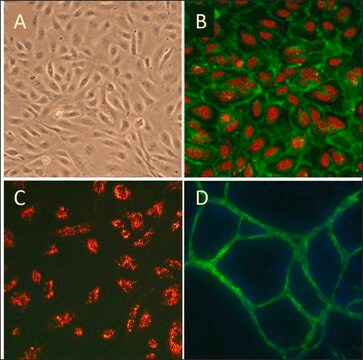211-500
Endothelial Cell Growth Medium (500 ml)
Synonym(s):
Primary Cell Culture Media
About This Item
Recommended Products
form
liquid
Quality Level
shelf life
6 mo.
manufacturer/tradename
Cell Applications, Inc
shipped in
wet ice
storage temp.
2-8°C
General description
Application
Quality
Preparation Note
Storage Class Code
12 - Non Combustible Liquids
WGK
WGK 1
Flash Point(F)
Not applicable
Flash Point(C)
Not applicable
Certificates of Analysis (COA)
Search for Certificates of Analysis (COA) by entering the products Lot/Batch Number. Lot and Batch Numbers can be found on a product’s label following the words ‘Lot’ or ‘Batch’.
Already Own This Product?
Find documentation for the products that you have recently purchased in the Document Library.
Customers Also Viewed
Articles
When properly supplemented, Medium 199 (M199) has broad species applicability, particularly for cultivation of non-transformed cells. It is widely used in virology, vaccine production and in vitro cultivation of primary explants of mouse pancreatic epithelial and rat lens tissues.
Protocols
Technical information for working with human pulmonary artery endothelial cells including thawing, subculturing and cryopreservation
Technical information for working with human aortic endothelial cells including thawing, subculturing and cryopreservation. Be sure to wear face protection mask and gloves when retrieving cryovials from the liquid nitrogen storage tank. The dramatic temperature change from the tank to the room could cause any trapped liquid nitrogen in the cryovials to burst and cause injury.
Human Umbilical Vein Endothelial Cells (HUVEC) Culture Protocol. Storage. Preparation for Culturing. Store the cryovials in a liquid nitrogen storage tank immediately upon arrival.
Our team of scientists has experience in all areas of research including Life Science, Material Science, Chemical Synthesis, Chromatography, Analytical and many others.
Contact Technical Service



